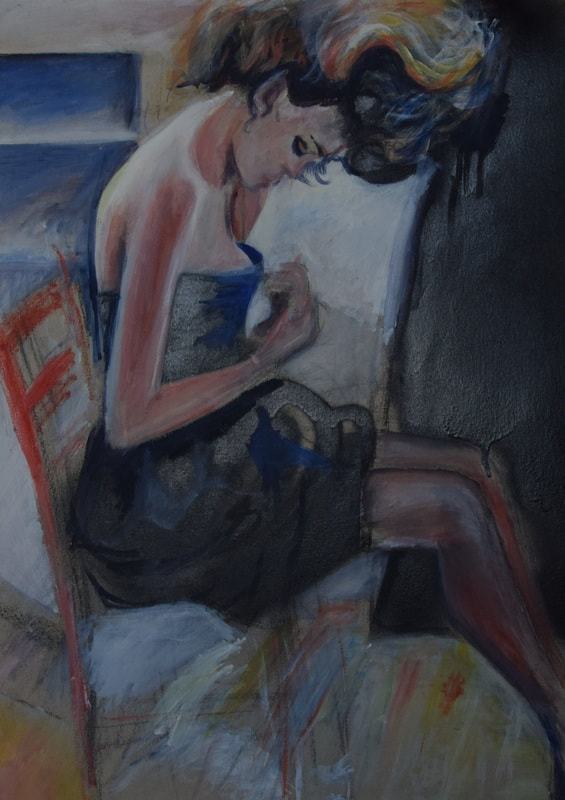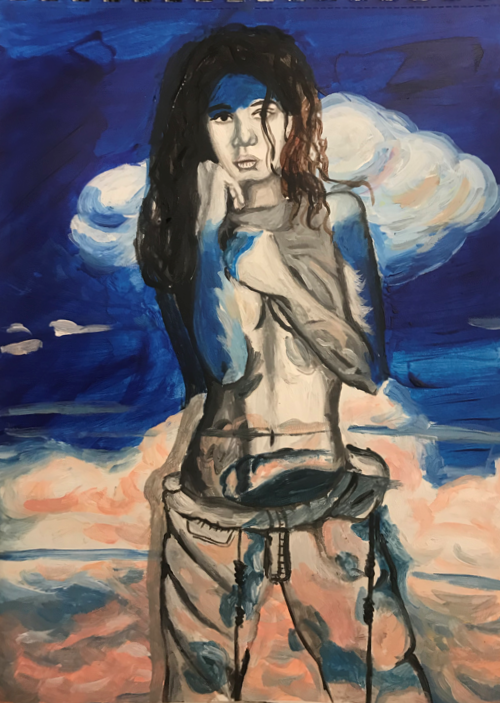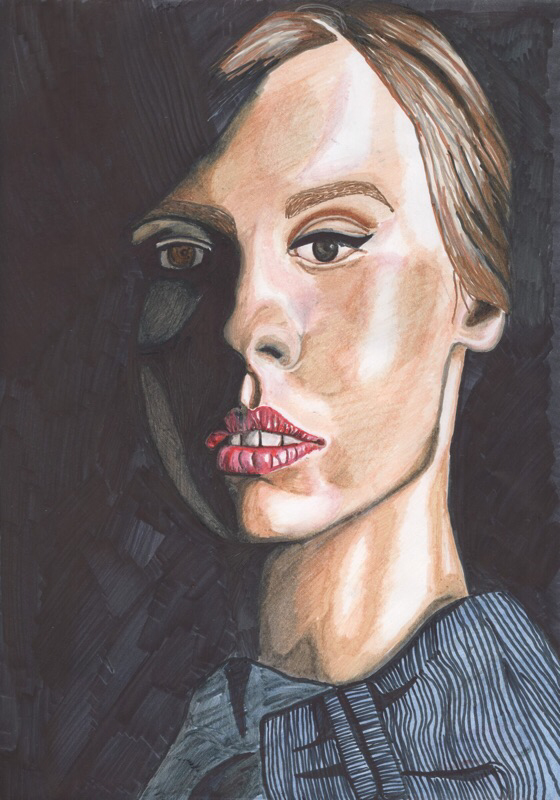|
This blog post was a long time coming because I wanted it to be truthful, which as discussed in previous posts, can be hard when discussing something as intuitive as one’s art. It bred a rejected draft and the post doubting whether there is even a point talking about art. All sparked by a conversation I had with a fellow artist Sophie Sturdevant, who is also fascinated by the female form. It was much later that I realised what I was trying to achieve with these images based on women in advertising. Advertising, fashion, often mistakenly deemed as shallow and trivial, rejected as vulgar and narcissistic by the ideals of the USSR. The feminine criticised as dumb and vain by misogynists never truly captured by feminist movements focused on simply allowing women to survive. But there is undoubtedly substance in beauty, in the unconditional love and care, in the deep emotional intelligence and range, in the sensitivity that only the woman can give, that she was made for by biology, by nature, god or gods in equipping her for her many roles, among them the forever rejected by modern society role of motherhood. Women celebrating the true nature of womanhood in its full unapologetic unconditional delicacy in their art or music are often criticised as not true feminists (Lana Del Rey) or dismissed as lacking depth (Taylor Swift). Women who look at the traumas the woman faces in the modern world in their art are criticised as lacking class (Tracey Emin). And it goes beyond that. Men capable of understanding, living and feeling the feminine suffer either active persecution or are faced with the same tiresome stereotypes women are whether heterosexual, trans or gay.
It seems the hatred goes deep into the imbalance in our society between the feminine and masculine. I think for me though it was always a personal journey - growing up in environments where I saw mainly toxic versions of feminity, I rekindled it later in life and developed a fascination with what it means to be a woman.
0 Comments
Luna: How does an artwork start for you? Do you have an idea of what it will look like before you start? Pyra: Most frequently, I have a sensation come upon me which begins to form a visual in my mind. A sort of synesthetic output to sensorial input. It never ends up just how I might envision it, though. It takes on a life of its own as I am in the process. L: Your art is deeply spiritual and ridden with symbolism. At times unnerving. Are your symbols purely intuitive? P: I would say they are purely intuitive. I often complete a piece and end up surprised with the things I see in it. Perhaps it's all a reflection of the unconscious. L: I often see the symbol of the eye in your work, does this carry special meaning to you? P: In a way, yes. I can't quite explain why though. It just sort of happened, and then continued to happen, and now it follows me. I do have my interpretations of it, of course... I'm hesitant to talk about those because I think what others take it as is more essential. L: You’re inspired by Austin Osman Spare and are an occultist yourself. Do you use any techniques such as automatic writing and automatic drawing when creating you Art Grimoirs? P: Absolutely. Portions of those works are entirely automatic in nature (and that makes its way into a great deal of my work). Sometimes I even work with my eyes closed, or in a dark room. There is an element of trance to it as well, which I distinguish as holding a bit more alertness. Of taking on the suggestion or energy or mood associated with a subject. In that facet of the process there are things which arrive into my mind's eye (some consider this the psychic mind, others who don't believe in that may simply view it as random thoughts.. I don't find it to be random, personally). Sometimes it's a scene playing out, or symbols. As soon as they come to me, I understand how they fit, but I wouldn't be able to explain where the understanding comes from so easily. L: Do you ever create art as part of a magic ritual? P: Yes, very frequently. And that is an interesting subject, art holds a prominent place in ritual and magic through many traditions. Sigils are a common example, also effigies, and various tools which may bear etchings of relevant images to a certain ritualistic purpose. All of this is art, but perhaps not as commonly seen as such at first glance. Ritual itself is art. But I digress! When it comes to painting in particular, I have done that for sure. One could see an artist's entire career as a ritual to meet a certain end, in that creative stimulation and release. L: You don’t have to answer this but what branch of the occult do you practice? Is there any being you feel particularly close to or inspired by? P: I have practiced in many areas of occult interest, and don't like to confine myself to one arena when I can explore the knowledge of many. Some might consider me a form of chaos magician for that reason, but that would take some further dissecting. I feel closest to the Dionysian; there's an emphasis on the wild and primal aspect of magic for me drawing from ancient Mystery traditions through to more modern folk beliefs. Our duality is at the forefront there, and duality inspires me. L: What gave you the idea for the inner demons project?
P: I began painting the shadow side of subjects several years ago on commission, that came naturally from a great interest in extending upon and spreading the kind of cathartic experiences I've had with surrealist and gothic literature. I wanted to bring that phenomenon into a visual place. With time this evolved into the Inner Demons project by fusing my interest in harnessing and depicting that, with my desire to be involved in raising mental health awareness (a passion of mine for a very long time). I thought, in a sense that I'd already been doing this, and that I loved doing it and wanted to make it into something more. I wanted to transform the art into a platform from which I could tackle the kind of causes that I haven't been able to otherwise do much about. It's a culmination of passions finding each other in the right way at the right time. L: Again you don’t have to reveal this, but what is your attitude to demons? P: I think the worst kind of demons are those that are repressed and locked away inside of us to the point of self-destruction. The religious idea of the demonic, meanwhile, I believe is skewed. It's easier for some to blame otherworldly forces for the terrors we inflict upon ourselves and others. You can look and read more about Pyra and her work on her website. Images courtesy of the artist. |
Here you can see updates about what I've been up to. Archives
June 2023
Categories |
 RSS Feed
RSS Feed







